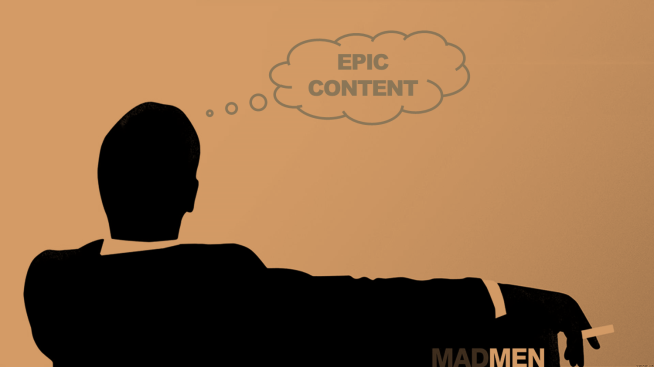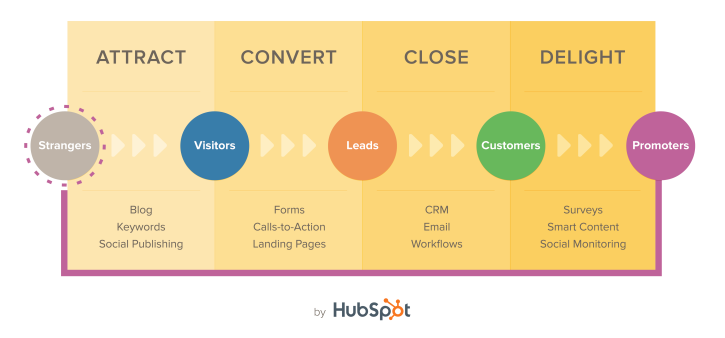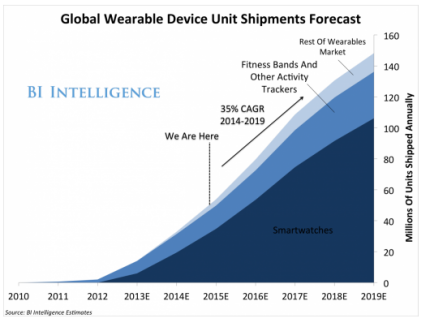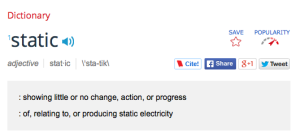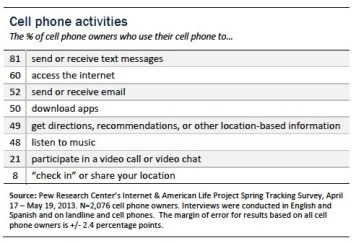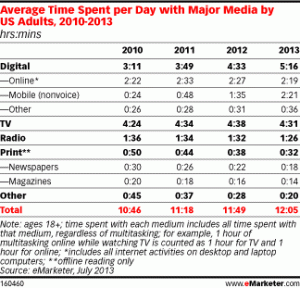Why Your Brand Should Be Blogging!
If you look hard enough, you can find a blog about almost anything. There are cooking blogs, pet blogs, “mommy blogs”, blogs about biking, hiking, astronomy, gear, cars, appliances, macramé, underwater basket weaving –you name it, and someone out there is writing about it. Would you believe that a new blog is created somewhere in the world about every half second? No wonder the Internet is teaming with over 150 million weblogs! For good reason too, because people are hungry for content. In fact, over 20% read more than one blog every day, many discover new products or services through blogs, and many base buying decisions on what they read. And those are just the personal blogs!
What You Need Is A Business Blog.
So, what is a business blog? Think of Business Blogging as just one more marketing channel, and a critical part of your inbound/content marketing plan. It is a way for a company to publish in-depth information that is sought after and useful to your customer base. The more you blog, the more opportunities you create to get your website found too! The best part is that it is incredibly inexpensive to execute and the payback far outweighs the cost.
Drive That Traffic!
One huge benefit of having a business blog is that every time you create a new post, you are creating a new indexed page on your site. Search engines in general, and Google in particular are starting to place more emphasis on meaning, significance and content, than they are on mere keywords when ranking sites. So that extra page of content is amping up your SEO, and giving you one more chance for your website to be found.
Convert! Convert! Convert!
So you’re blogging now, you’ve got a few posts under your belt, and you have a nice stream of readers coming to your website. Now what? Convert those readers into either leads, or customers of course. Once they have showed enough interest to come to your website, you have their attention for just a few moments and now is your chance to give them a call to action. If you want to generate a lead, give a call to action that exchanges something of perceived value for customer information like a free trial (samples etc.), free white papers, branded SWAG or whatever. Just get their information so that you can start building that personal relationship as soon as possible. On the other hand, if you have a solid offer, you could certainly go for the conversion at the outset. As soon as they are on your site, make them an offer they can’t refuse. Would you believe that 57% of blogging companies have reported that they have acquired new customers through their blog? Believe it!
Blogging Makes You The Expert.
You know your business as well as anyone, so why not write about it? Having a business blog can actually make you the de facto expert on the subject, and a future go-to source for more information about your category. Your expertise not only brings people to your site, but it allows you to build all-important trust, and once they trust you, conversion is just a hop skip and a jump away.
Put A Face On The Organization.
Well maybe not a face, but certainly a personality. Blogging allows you to tell your brand story and as we all know, stories resonate with readers more than almost anything else we can put in front of them. The blog can give an insight into company Social Responsibility initiatives, highlight the company mission and philosophy, and give customers a real reason why you are in business, and more importantly what it means to them.
Social Media Loves a Good Blog.
If you write it, they will share. Linking your blog to your social media platforms can not only gain readers, but it can establish an interactive community that will provide an open dialog and plenty of user generated content. And that UGC can in some ways be as valuable, if not more so than corporate content.
Go Blog.
Blogging can shower the practicing company with untold riches IF a few simple rules are followed. First, writing an official company blog isn’t a hobby, and it isn’t a dalliance to be attended to sporadically. It is a serious business function that requires planning and consistency. That’s not to say you have to drop a new article every day, but you should try to adhere to a weekly or bi-monthly schedule if you can. Secondly, create interesting and useful content that your customers can benefit from in some way. That sounds strange to have to stress, but it might surprise you to see the number of companies who write about inane , inconsequential and unrelated topics just to have a blog post. Customers not only won’t get any benefit from that kind of writing, but they may also decide that you aren’t exactly what they once thought. Lastly, link to all of your social media platforms and reap the SEO benefits! You can do it! I have all the confidence in the world in you.
–Steve
Once Upon a Time, Digital Storytelling Was All Anyone Wrote About…
Yes, it is indeed another blog post about digital storytelling and its monumental impact to marketing. Why do you suppose that is? Well, “monumental impact” should have been a clue. Aside from the fact that it is the industry’s subject du jour, storytelling IS the new marketing. Gone are the days of throwing out some quick features and benefits along with a snappy new jingle. Today’s savvy consumers need to connect with a brand in ways they never have before. It has become urgently important to engage with your audience, particularly Millennials, in a way that creates an emotional connection. Don’t sell them stuff, bond with them over stuff. As you have probably already guessed, story telling is a great tactic for creating that emotional bond.
Why Storytelling?
When you boil it down to its essence, business and everything that it entails, is about people. People selling to people. And because business is so people-centric, it makes even more sense to gain as much insight as possible into what motivates people to make (or not make) buying decisions.
Our brains are designed to understand and retain stories in a different (read: simpler) way than we understand and retain facts and figures.The truth is, most people are drawn to, and subsequently motivated by, feelings and experiences. Have you ever seen a spreadsheet go viral? Have you ever rushed to social media to tell everyone about an ingredients label on the back of a soup can? I would certainly doubt that you answered “yes” to either question. Feelings and emotional connections come from shared experiences and those experiences are usually imparted in the form of storytelling.
Based on the way we understand and then retain stories, storytelling marketing has the potential to increase not only brand awareness, but brand loyalty, trust and even action (purchase). Our simple little brains crave stories and that’s why novels and film are so popular. Stories leverage our emotions in order to gain, and in most cases keep, our attention. In fact, would you believe that people rely more on their emotions than on intellectual reasoning when making a buying decision? It’s true, and probably the very reason Harley Davidsons sell like they do.
When a Company Tells a Story…
When a company tells a story that is compelling, emotionally engaging and interactive, they not only have the ability to grab and hold the attention of customers, both current and potential, but they get a chance to infuse the nameless, faceless organization with a personality by imparting some of the company’s perspective.
Forget About The Old Hard Sell
Smart consumers are on the lookout for disingenuous sales tactics. They want a brand they can trust, and one that they feel good about doing business with. If a brand can create and emotional response—it doesn’t really matter which one—it is one step closer to that coveted relationship.
How Does One Acquire That which Can’t Be Bought?
An excellent example of subtle, entertaining and ultimately provocative storytelling can be found in “A Gentlemen’s Wager”. The short film is British Director Jake Scott’s breathtakingly cinematic answer to that very question. As the film opens, two apparently enormously wealthy men, played by Jude Law and Giancarlo Giannini, are enjoying a leisurely glass of Johnnie Walker Blue on the deck of a rare vintage yacht in an exclusive tropical locale. After a moment of silent reflection, Jude Law’s character announces that he would like to buy the boat. The older, presumably wiser Giannini launches into a detailed monologue about the vessel’s pedigree and vintage, declaring “there is nothing like it in the world. It’s rarer than rare”. [ Of course this declaration is intended to be a subliminal metaphor for Johnny Walker’s top shelf hooch. ] He then goes on to state that it is not for sale. Unhindered, Law’s character tells his friend that he doesn’t want to buy it with money, but rather he wants to win it …with a dance. “A Dance?” Giannini asks incredulously, but after a moment of consideration he raises his glass in acceptance of the Gentlemen’s Wager.
We are then whisked back to London as Jude’s character prepares for his part of the wager. We see him being fitted for a bespoke suit, Saville Row I am guessing, learning a piano piece and painstakingly plotting out his choreography for what ultimately has to be one pretty spectacular dance. When he is ready, Law summons his older friend to a clandestine London location for the big pay off.
As Jude begins his spectacularly planned number, replete with a jazz band and backup dancers, he periodically stops to seek the approval of Giannini. Seemingly unimpressed, Giannini continues to sip his Johnnie Walker Blue Label Scotch, hoping to be wowed. Does Jude’s character have it in him? He’ll have to find out for himself as he pushes himself to the limits. Finally, he stops one last time to see if his comrade is impressed, and sure enough, he is. So much so that he joins in the dance.
The film cuts back to the same yacht in the same tropical locale with the same two old friends enjoying what can only be presumed to be the finest scotch money can buy. This time, Giancarlo Giannini pipes up saying that he wants to buy the boat. Jude scoffs as he playfully begins the same speech about the vessel’s pedigree we heard earlier, finishing with a resolute sounding reply that the boat is not for sale. Giannini then says that he doesn’t want to buy the boat with money, but that he wants to buy it… with a story. The two clink glasses to seal the deal, and so we go again.
It is at the very end that we really understand the true nature of the wager, and the true meaning of the film. Here are two men who possess the financial wherewithal to acquire anything that money can buy. But what about things money can’t buy? Nothing truly good in this world comes easy, and sometimes we have to plumb the depths of our soul to find what it takes to get that which we most desire. These are two men who go to great lengths to acquire the very best the world has to offer, so it is only natural that their Scotch of choice be the fabled Johnnie Walker Blue Label. The story is amusing and entertaining and certainly engages an emotion or two, but you may notice when viewing it that the scotch itself is only ancillary to the story.
Nice.
Subtle.
Just as the digital storytelling Gods intended.
–Steve
Two Hot Digital Tactics That Go Great Together!
Advergames.
Like many key marketing tactics of today, advergaming was developed in the 1980’s and was deployed without benefit of the fancy-schmancy name. It wasn’t actually until 2001 that the term “advergaming” was officially coined in Wired Magazine’s Jargon Watch column. Since that time, interest in advergaming has continued to rise because of the overall ability of game mechanics to attract interest, drive engagement and even motivate action. And motivating action is what it’s all about! It has been predicted, that advergaming and in-game advertising could very easily become a $1 billion plus industry, and that prediction is coming true right before our eyes in 2015. Some of the earliest examples of the genre included the made-for-console games “7-Up Cool Spot”, “Kool Aid Man” —THE first known advergame — and of course, Domino’s Pizza’s “Avoid the Noid” as seen below. These games were engaging, fun, and kept the brand in front of impressionable little minds for hours at a time.

Mobile Marches On.
Mobile Advertising/Marketing on the other hand, is growing exponentially faster that all other forms of digital marketing combined. In the past, there has been more of a disparity between the significant amount of time people spend on mobile devices, and the less than significant amount spent on mobile advertising, but marketers are beginning to understand that there is an emerging class of “mobile-first” digital consumers, and they want to get in front of those people. It is projected that marketers will allocate roughly $42 billion per year for mobile ads by 2018.
PBS Kids Pulled it Off!
If only there were some way for a brand to combine these two powerful tactics into one super-tactic, they could be at the entrance of the proverbial gold mine. Sometimes top-flight vision like that comes from places we’d least expect. In one such case, the magnificent geniuses at PBS Kids, did exactly that and combined a popular kids game with a mobile advertising campaign to create marketing gold.
PBS embarked on a campaign to celebrate what would have been Dr. Seuss’ 108th birthday, by integrating a very clever and engaging advergame with a mobile app and mobile advertising designed to encourage website traffic and viewers to tune in to an upcoming TV special. Instead of using traditional media or even static digital ads to showcase the time and date of the special, PBS took a mobile-specific approach by incorporating a simple, target-age specific game that also allowed for a sneak peak of the show and a real-time countdown clock to give the viewer a sense of urgency.
How did they do it?
PBS Kids targeted moms who would be interested in showing their children the special, and those who may have younger children who typically use their phones and/or tablets to play games. They used very targeted opt-in mobile ads to alert the mothers (parents) to the show and the game and created a sense of urgency via the use of the countdown to airtime clock. The game was part of a free app mothers could download and featured very simple interface, and short game play with options to play again and to see a preview of the show.
The plan was quite clever in its approach that targeted busy mothers with young children, who are prime Dr. Seuss age and quite often in need of something to “occupy” curious little hands. The planning was herculean, but the execution was fairly simple. Through intelligent targeting, interactive advergaming, integration with mobile and a constant sense of urgency, PBS built a campaign that not only increased mobile engagement, but drove web traffic and contributed heavily to tune-ins. Based on the success they had initially, PBS Kids launched a subsequent game called “Cat in the Hat Knows a Lot About Math” for similar reasons and with similar results.
The PBS execution was beautiful in its simplicity. They used mobile advertising to attract busy mothers and then required the download of an application, which in and of itself constitutes opt-in permission. Once the app was downloaded and the parent gave the device to a child for game play, no further permission was required. Smooth and effective.
When the dust all settled, it was clear that PBS provided an excellent consumer experience to users in several ways. First, they took their message to the consumer where she lives, thus making it incredibly easy for her to consume the content and make decisions about further interaction. Then they provided a solution for harried parents who are not only looking for quality programming for their children, but meaningful and safe games/pastimes to keep them occupied at certain points of the day. The children enjoyed the game and the preview of the impending show, which helped them forge a new relationship with the works of Dr. Seuss, and in turn, PBS.
Takeaways.
In an increasingly digital society, advertising viewers are widely dispersed among a growing number of media. Gone are the days of advertising to 80% of America while they watched Ed Sullivan on Sunday night. As marketers, we have to place our message in front of those with whom it will create the most action, and that means we have to go where they are. Mobile is as close as you can get to the consumer. No other medium is as personal, and no other medium is as pervasive. Once we have their attention, we need to engage them to build brand awareness and advergaming does that in a way few other tactics can. Advergames are less intrusive because they are always opt-in, and often times sought out. Not only that, but they help the user achieve higher levels of brand awareness and recall. When you combine mobile with advergaming, it really is a win/win for everyone!
–Steve
If a Picture is Worth 1000 Words, VIDEO is Priceless!
While you have been blogging away and writing other intricately optimized web content, video has been slowly, but steadily, taking over the Internet. Don’t believe me? No problem. Let’s play a little guessing game. What is the second largest search engine in the entire universe? Yahoo? No. Bing? Get serious. If you guessed YouTube, you would be right on target! So while your colleagues and counterparts have been single mindedly scrambling to jump through the never-ending hoops presented by Google’s incessant desire to change its algorithms more often than a Kardashian changes husbands, YouTube has become an internet juggernaut. Why? Because people want video content. It really is that easy. However if that is too simplistic an answer for you, here are a few more reasons why you might want to consider using video in your marketing mix.
People Want Video.
That seems like a pretty good reason to add video to the mix all by itself, doesn’t it? More people want video content than ever before, and more people are actively searching it out specifically. Never mind that whole YouTube-being-the-second largest-search-engine thing; consider that by 2019, video will comprise 80% of ALL Internet traffic. It is postulated that it could reach as high as 90% of all internet traffic depending on which source you ask. No matter how you slice it, that is a big head of lettuce. The bottom line is video is where most of your customers spend their time now, and you need to be where they are.
The Power of the Story.
Ever hear the old adage “facts tell, but stories sell”? Why do you suppose that is? Stories have a way of avoiding confusion by illustrating scenarios in easily understandable terms. Stories also side-step the skepticism that usually accompanies the old hard-sell tactics. Stories are believable, even if they are branded content. Stories have the ability to stir emotions in a way no mere features and benefits can. And possibly best of all, stories help differentiate you from your competition because they are uniquely yours. What is the easiest way to convey an entire story to your target market online? If you said “video”, you get a gold star on your chart for the day.
Give a Face to The Faceless.
Video has the potential to humanize a company and to build trust. People are eager to engage with video, and they inherently believe it. It gives a faceless company a more personal touch. That trust and that personal touch are key in the effort to build a true relationship with your consumer. The ability to combine audio and video exponentially increases a brand’s ability to connect on an emotional level, and that is something you can’t put a price on.
Optimize!
Yes, SEO! Search engines LOVE video content. In 2015, all search engines, Google in particular, are crawling the web in search of the most compelling and engaging content. Those entities that get the highest score are naturally indexed higher in the rankings. As a matter of fact, Forrester research indicates that websites with video content are 50 times more likely to index on the first page. As an added, and very important bonus, video increases the ease with which your content can be found in organic search.
Potential to go Viral.
Yeah, yeah,
I know, everyone wants to go viral–and why shouldn’t they? Viral builds audience. Viral creates brand awareness. Viral gets you that corner office you’ve had your eye on ever since Jenkins went on maternity leave. Unfortunately there is no magic formula to create viral content. One thing that can help though is to create content that is disruptive, sets you apart from your competition, and tells a story. If you can manage to meet those criteria and elicit an emotional response, good or bad, your content will most likely be shared. Video is the most expedient way to fulfill that punchlist. Plus, video is a natural for sharing on social media. People love to share videos that make them happy, sad, or even outraged. If you can ride that wave, that corner office is as good as yours.
So as the sun sets on another installment from your old pal Steve, let me leave you with this one piece of advice: if you aren’t making video a part of your content marketing plan, you may be doing yourself and your company a great disservice. In this day and age, there is no excuse. Video is not expensive, editing software and equipment are very accessible, and a full-blown project can be taken from napkin sketch to live on the web in just a few days. So what are you waiting for? Go make some video content today! Scoot!
–Steve
Why Your Content Is So Crappy, And What You Can Do To Make It Better.
Ok, ok calm down. It’s probably not all that bad. Of course your content could always be better and if you follow just a few basic tips, you’ll be on your way to content super-stardom!
Before we dive in, let’s take a quick refresher to make sure we’re all singing from the same hymnal—so to speak. The Content Marketing Institute, which is the source for all things content marketing related says:
“Content marketing is a strategic marketing approach focused on creating and distributing valuable, relevant, and consistent content to attract and retain a clearly-defined audience — and, ultimately, to drive profitable customer action”.
Content is the beginning phase of the inbound marketing cycle, and inbound marketing is one of today’s best ways to drive inbound traffic and leads. You have to hook ‘em before you can cook ‘em, and good content is one of the juiciest worms, so you had better believe that getting it right makes all the difference. If your content is crappy, it may be because you have left out one or more of the following tips.
So? How do we make great content?
- Know thy audience. You’ll notice that the Content Marketing Institute’s definition explicitly mentions valuable and relevant content? Well how can it be relevant and/or valuable if you don’t know anything about whom you are talking to? This is the A-1 Cardinal rule that should come before all others, and not just for content creation, but for writing in general.
- Grab attention with the headline. Try to succinctly sum up the general thrust of your content in 60 characters or less. Sixty characters represent the length that will be shown in a Google search. Go past that and your title will be cut off , and nobody wants that. The ideal title length is right around 55 characters.
And while you are writing this masterpiece, don’t be afraid to go for the gusto and stir up a little controversy and/or emotion. I got you to click on this article didn’t I?
- Keep it short and sweet.
- Be conversational. Part of the point of digital marketing and content production is to put a face on your company and give it a more human touch. That can’t happen if you’ve got Mr. Roboto pounding out boilerplate copy all day. You want to “join the conversation” in a compelling and enticing way, not publish VCR instructions.
- If it ain’t fun, why do it? I’d like to borrow a page from the Warby Parker playbook and say that fun content trumps dull content every time. Obviously if you are writing content for Cancer Treatment Centers of America, “fun” content isn’t really an option. However, most other types of companies can benefit from a little injection of the ole F-U-N.
- Tell a story. There’s an old adage that says: “facts tell, but stories sell”. And that is as true today as it ever was, maybe even more so. Don’t meander around in your branded content, tell a story! Stories create experiences in the mind. Stories differentiate your message from all of your competition. Stories are much more likely to be remembered. And possibly most importantly, stories are more likely to be shared with other people.
- Call to action. Oh yeah, you forgot about that one. Don’t fret young Jedi, many content publishers forget that simple tactic. Think to yourself: “what is the real purpose for me to publish branded content? Hint: it’s sales. You can dress it up however you like and say you want to drive engagement, or web traffic or whatever, but at the end of the day you can’t eat engagement. Sales baby, sales. So make sure to include a simple CTA within your content. Don’t overdo it though or you will negate the benefits of using content as your draw. One CTA per page should suffice, but make sure to have at least one. Ask for that action!
So as you can see, the murky and mysterious world of content marketing isn’t as murky and mysterious as you once thought. In fact, it’s downright easy if you know where to start. Hopefully these few tips will help get you on your way. Now get out there and publish, you magnificent beasts!
–Steve
Connect with me on LinkedIn, or follow me on Twitter @SteveGeibel
3 Ways Wearable Tech is Going to Impact Digital Marketing
Wearable Technology from the Marketing Perspective.
Google Glass flopped outright; smart watches, including the much ballyhooed iWatch, are a little behind on the adoption curve; and while 1 in 10 adults wear a fitness monitoring device like FitBit or JawBone, they have somewhat more limited uses. That is, at least for now. Like any other world changing technology (Automobile, airplane, rocket, computer) it takes a few iterations to hone in on optimal functionality. So make no mistake; these miniature devices may not be setting the world on fire at their introduction, but are not going away anytime soon. As of right now, 1 in 5 adults own a piece of wearable tech and 1 in 10 wear them every day. In fact, it is estimated that 148 million wearable units will ship in 2019—a mere 4 short years from NOW.
If you’re thinking; “oh great, another marketing medium to conquer”, you’d be right, but in this particular case, the upside is tremendous so the glass is half full my friends. In order to help you start adjusting your mindset to the inevitable, here are 3 ways that wearable technology is going to knock digital marketing on its ear.
- More Face Time With the Customer
As practitioners of the marketing arts and sciences, we are constantly trying to find newer, faster and better ways to get our messages out in front of potential customers. With traditional media, we have widely dispersed audiences whose time of engagement is waning with each tic of the digital Mickey Mouse. Emerging media on the other hand is coming on strong. In fact, in 2014 consumer time spent on mobile devices eclipsed time spent viewing TV, and that little trend has no signs of slowing down. However the problem with mobile devices is that they require hands-on use and take up space. No one is going to jog with an iPad, and God forbid if you try to sneak a peak at your phone in a movie theater. Don’t get me wrong, we as a society love our phones, but we are still only engaging with them on average 3 to 4 hours a day.
Wearables are being built with simpler interfaces and smoother operation making hands-free operation a breeze, which in turn, makes for a (potentially) more pleasant user experience. The great thing about wearable technology is right in the name. People wear them, which means that they could essentially be engaging with them almost constantly! That constant engagement gives marketers exponentially more time to work our magic.
- Give Context to Engagement
The adoption and proliferation of wearable technology is going to allow marketers to get a much clearer picture of the customer (and potential customer) by understanding his behavior based on the use of multiple devices. Better understanding of the customer allows us to create a much more targeted and personal marketing experience, instead of simply shooting a mobile message out and hoping it hits at the right time and place.
Location based technology like iBeacon will allow marketers to offer sales and coupons based on location or proximity to certain products. Not only that, but behavioral feedback such as how long visitors stay at each exhibit in a museum or trade show or zoo, or even how long they linger in each department of a store or store in a mall will be easily had.
Many fitness wearables allow for bio-response readings that could ultimately allow marketers to target customers when they are in a mood most receptive to the sales stimulus. A smart watch or other wearable would act almost like a 21st century Mood Ring to allow marketers to know when the time is right, or when to steer clear.
- Big Data? More Like HUGE Data!
As the adoption curve for wearable technology steepens and picks up speed, consumers will become more and more accessible—even beyond the accessibility we saw with mobile smart phones. Smartphones allow marketers to track a certain amount of information, but there are large gaps in the data that could actually speak to motive and mood.
Before, we knew that Joe “checked in” at the gym. Now we might be able to understand how hard he worked while he was there, how long he was there, and what kind of general shape he is in based on biofeedback data, and that despite his hard workout he treats himself to a latte at Starbucks everyday and pays for it with Apple Pay. We can understand who runs marathons and who may actually be couch potatoes, which could eventually have huge implications in the insurance industry. Imagine a scenario in which people could receive insurance discounts based on their habits (picture Progressive’s “Snapshot” program). The possibilities are virtually endless.
This emerging technology is going to allow marketers to track and record consumer habits in greater detail than ever before, resulting in huge amounts of collected data. The savvy analytics practitioner is going to own the keys to the kingdom.
–Steve
Connect with me on LinkedIn, or follow me on Twitter @SteveGeibel
I Have Seen the Future, and It Is Now.
Last week’s post [May 25, 2015] about how marketers need to embrace mobile technology and mobile marketing techniques should stand as an ominous precursor of the direction this blog is about to take. For the next several weeks, I intend to tackle various issues and topics surrounding the always exciting, and sometimes daunting world of Emerging Media.
But What IS Emerging Media?
I’m glad you asked. In the olden days, we just had media. No fancy prefixes, just plain old media. In its heyday, “media” included 3 channels of broadcast TV (4, if you were lucky enough to live near a UHF station), radio, print (including newspaper and magazines) and outdoor. And that was it.
However with the advent of the Interwebz and the associated digital age, what once was known simply as media, is now called “Traditional Media”, or if you really want to stick the knife right in my heart, “Old Media”.
So what has replaced “Old Media”? Fortunately nothing has replaced traditional media, at least not yet, but as technology progresses, so do the ways a marketer can reach his target. There are burgeoning technologies that have enabled a new kind of media, a media that marketers refer to as “Emerging Media”. Marketers love their buzzwords and were quick to assign one in this case, but is it entirely accurate?
Emerging Media consists of websites, email, mobile technology, online video, wearable technology, streaming media, SEM and of course, social media. But social media, websites and email have all been around for a long time, right? Exactly! And if that is the case, they aren’t necessarily “emerging” now are they?
After examining the characteristics of each medium and thinking about how the two groups of Traditional and Emerging Media are used by marketers, how customers perceive them and their ultimate potential in the future marketingscape™, it became clear to me that there are other buzzwords that are more suited to describe the two groups. Old Media, or Traditional Media if you will, is actually very static in terms of use, perception and potential. To illustrate, let’s look at the definition.
“Showing little or no change, action, or progress”. That pretty well sums up the current state of TV, radio, print, and newspaper. I don’t mean static in the sense that describes movement, or lack thererof within the medium itself [ i.e. print being static whereas, TV isn’t]. I am talking about static in the way that the media fit into the grand scheme of the marketing/consumer paradigm. Traditional or Static Media, consists of a one-way conversation that relies on mass marketing techniques, controlled communication, and a very company-centric viewpoint, delivered in a way that only requires passive involvement. Those techniques have been around since the inception of advertising, and frankly, little has changed.
So, if traditional media becomes “static media” in my little scenario here, what would the various and sundry categories that fall under the “emerging media” moniker become? You guessed it, Dynamic Media.
Again, let’s consult the simple definition for clarity.
“Always active or changing; having or showing a lot of energy”. That about covers it. Whether it be the Web itself, Streaming Video, Digital, Social Media, Mobile, SEO, Wearables, you name it, the new media marketing frontier is, and will continue to be in a state of flux. These Dynamic Media attempt to create relationships and dialogs to further CRM, which in and of itself is a dynamic venture. Often times the consumption of any version of these Dynamic Media provides feedback, which of course is ever changing. These media are very customer-centric and they focus more on communication (two-way), than branding (one way), and as data is gathered and media is consumed, it is all building toward a personalized experience, which is in no way static. So hey, Dynamic Media –feel free to use that bad boy. Pepper it in your conversation tomorrow, but just remember where you heard it.
Despite the differences between the two groups of media, there may be more of a synergy than we might think. Twitter has become the de facto second screen of choice for televiewing, and most print ads already feature links to digital media — including the secret dirty word that every digital marketer pretends to hate, and yet somehow still utilizes–the QR Code! But beyond even the low hanging fruit, I can envision a day when the internet (or multiple internets) become(s) just one more channel on the TV—and when I say “TV”, I am generically referring to all screens from the sixty-incher in the den, to the iPhone 8 , the smart watch and everything in between. In my vision, everything becomes broadband based, and all content is streamed to any device we like. This will open the door for even more personalization and targeting in what we currently think of as traditional TV advertising. Much in the same way that our surfing habits are recorded and we are shown ads that specifically match our preferences, that same type of behavioral data could jump the tracks so to speak and comingle with viewing preferences to steer the commercial content to the viewer that they are most likely to respond to.
It’s a brave new world out there so you’d better get up to speed, because the revolution has already started and the future of marketing technology is here today.
Why Marketers Should Go Mobile or Go Home.
We’ve all been kidding ourselves for a long time. Our current marketing efforts are more than adequate, right? Bzzzzzzt. It’s time that we all pull up our big boy and big girl pants and face the undeniable fact that mobile marketing is (becoming) absolutely essential for any kind of business that has a retail or customer facing presence.
A Pew Research study alerts us to the rapidly growing mobile trend with some hard numbers. For instance, 64% of American adults own smartphones, 90% own cell phones and over 42% own tablets. That’s a big head of lettuce, my friends. And what’s more is the fact that they live with these devices with over 67% reporting that they check their phones for calls or messages even if they have no alerts, and 44% admit to sleeping with their device to ensure they don’t miss anything important.
During the carefree Mad Men days of mid-century America, the audiences were a lot more homogeneous, and certainly much easier to find. If it was a Thursday, Mr. and Mrs. America stopped everything to park it in front of I Love Lucy. And if it was a Sunday, the whole family gathered around the anemic glow of the old Zenith to watch Ed Sullivan. There were three networks, and a handful of popular national magazines and newspapers. Connecting with the public was a relatively simple affair.
The proliferation of cable and the niche magazine explosion sliced and diced the once homogeneous audience into layer upon layer of target segments. By the time the internet showed up and got its foot in the door, all bets were off. Though television is still the medium with which adults spend most of their leisure time, digital is quietly taking over. The point is that while it used to be much easier to target consumers because we knew exactly where and how to find them, the widespread adoption of technology has caused consumers to spread their time over many, many more media, making it increasing harder to get the right message to them, at the right time. That is until now.
People love their mobile devices, and that trend shows no signs of slowing down. Ever. Once considered emerging media, mobile is now THE force to be reckoned with. A full 80% of consumers use their smartphone or tablet to shop, and many do it while shopping. Despite the fact that TV viewership is spread out across hundreds of channels, all of which share time with online video streaming and web surfing, we still know where to find consumers. Right next to their beloved mobile device.
So if you are a retail store, restaurant, consumer packaged good company, or just about any B2C entity for that matter who hasn’t at least investigated mobile marketing, you are seriously behind the curve. This is your wake up call. It’s not too late. If you’d like to hear more about the power of mobile marketing, hit me up on my cell. It’s always in my hand.










